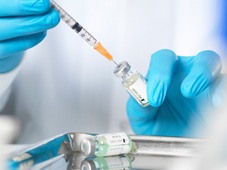
Cases of measles up in Georgia
By Tea Mariamidze
Friday, September 13
From January 1 to September 6, 2019, there were observed 3,910 cases of measles in Georgia, 2 of which resulted in deaths.
The information was released by Georgia’s National Center for Disease Control (NCDC) and Public Health.
The NCDC says that measles cases have been up in 2019 due to the spread of the disease in 2017-2018.
The center says 89,994 cases of measles were reported in Europe in the first six months of 2019, 3,774 cases of measles were reported in Georgia during the same period, and as of September 6, the cases have risen to 3,910.
It also underlines that the only way to eliminate the disease is timely vaccination. The agency says one of the reasons for spreading of the disease is the weak immunization in the 1990s and ineffective immunization programs in 2008. In the latter case, only 50% of the target contingent was vaccinated.
“Only in 2019, nearly half (over 47%) of people who were infected were 20-40-year-olds. Consequently, this age has become the target of the disease on the one hand and the source of its spread on the other hand. The rate of morbidity under one year age is 8 times up,” the center stated.
NCDC calls on all citizens to get vaccinated on time, adding the procedure is free of charge and provided by the government.
Measles is a highly contagious infection caused by the measles virus. It is an airborne disease which spreads easily via air and also through saliva or nasal secretions. Nine out of ten people who are not immune and share living space with an infected person will catch it.
Initial signs and symptoms typically include fever, often with a temperature higher than 40 °C (104.0 °F), cough, runny nose, and swollen eyes. Two or three days after the start of symptoms, small white spots may form inside the mouth, known as Koplik's spots. A red, flat rash which usually starts on the face and then spreads to the rest of the body typically begins three to five days after the symptoms are revealed. Symptoms usually develop 10–12 days after exposure to an infected person and last 7–10 days.
Complications occur in about 30% and may include diarrhea, blindness, inflammation of the brain, and pneumonia.


